Potrebujeme váš súhlas na využitie jednotlivých dát, aby sa vám okrem iného mohli ukazovať informácie týkajúce sa vašich záujmov. Súhlas udelíte kliknutím na tlačidlo „OK“.
ASTM D5229/D5229M-14
Standard Test Method for Moisture Absorption Properties and Equilibrium Conditioning of Polymer Matrix Composite Materials
Automaticky preložený názov:
Štandardná skúšobná metóda pre vlastnosti absorpcie vlhkosti a rovnováha klimatizácia polymérnej matrice kompozitných materiálov
NORMA vydaná dňa 15.5.2014
Informácie o norme:
Označenie normy: ASTM D5229/D5229M-14
Poznámka: NEPLATNÁ
Dátum vydania normy: 15.5.2014
Kód tovaru: NS-30353
Počet strán: 19
Približná hmotnosť: 57 g (0.13 libier)
Krajina: Americká technická norma
Kategória: Technické normy ASTM
Kategórie - podobné normy:
Anotácia textu normy ASTM D5229/D5229M-14 :
Keywords:
conditioning, moisture absorption, moisture desorption, moisture diffusivity, moisture equilibrium, polymer matrix composite materials, ICS Number Code 83.140.20 (Laminated sheets)
Doplňujúce informácie
| Significance and Use | ||||||||||||||||||
|
5.1 Procedure A is designed to produce moisture diffusion material property data that may be used as follows: 5.1.1 To determine approximate exposure times for coupon conditioning in Procedures B-E, Y, Z; 5.1.2 As input to moisture prediction analysis computer codes; or 5.1.3 For making qualitative decisions on material selection or performance under environmental exposure to various forms of moisture. 5.2 Procedures B-E are designed to condition test coupons to a specified environmental condition or equilibrium state prior to other material property testing (including but not limited to mechanical testing). 5.3 Procedures Y-Z are designed to determine the loss of moisture content due to removal of a test coupon from the conditioning chamber (such as for strain gage bonding) or due to heating of the test coupon prior to and during mechanical loading. 5.4 A single pair of tests on thin and thick specimens using Procedure A provides the moisture diffusivity constant, Dz, and the moisture equilibrium content, Mm, at the given moisture exposure level and temperature. Multiple tests at differing temperatures are required to establish the dependence of Dz on temperature. Multiple tests at differing moisture exposure levels are required to establish the dependence of Mm on moisture exposure level. 5.5 Vapor-exposure testing shall be
used to condition the specimen when the in-service environmental
condition is a vapor such as humid air. Immersion in a liquid bath
should be used to simulate vapor exposure only when apparent absorption
properties are desired for qualitative purposes. Properties
determined in the latter manner shall be reported as apparent
properties.
1.1 This test method covers a
procedure for the determination of moisture absorption or
desorption properties in the through-the-thickness direction for
single-phase Fickian solid materials in flat or curved panel form.
Also covered are procedures for conditioning test coupons prior to
use in other test methods; either to an essentially moisture-free
state, to equilibrium in a standard laboratory atmosphere
environment, or to equilibrium in a non-laboratory environment.
Also included are procedures for determining the moisture loss
during elevated temperature testing, as well as moisture loss
resulting from thermal exposure after removal from the conditioning
environment, such as during strain gage bonding. While intended
primarily for laminated polymer matrix composite materials, these
procedures are also applicable to other materials that satisfy the
assumptions of 1.2 The calculation of the
through-the-thickness moisture diffusivity constant in Procedure A
assumes a single-phase Fickian material with constant moisture
absorption properties through the thickness of the specimen. The
validity of the equations used in Procedure A for evaluating the
moisture diffusivity constant in a material of previously unknown
moisture absorption behavior is uncertain prior to the test, as the
test results themselves determine if the material follows the
single-phase Fickian diffusion model. A reinforced polymer matrix
composite material tested below its glass-transition temperature
typically meets this requirement, although two-phase matrices such
as toughened epoxies may require a multi-phase moisture absorption
model. While the test procedures themselves may be used for
multi-phase materials, the calculations used to determine the
moisture diffusivity constant in Procedure A are applicable only to
single-phase materials. Other examples of materials and test
conditions that may not meet the requirements are discussed in
Section 1.3 The evaluation by Procedure A of
the moisture equilibrium content material property does not assume,
and is therefore not limited to, single-phase Fickian diffusion
behavior.
1.4 The procedures used by this test method may be performed, and the resulting data reduced, by suitable automatic equipment. 1.5 This test method is consistent with the recommendations of CMH-17 Rev G (1),2 which describes the desirable attributes of a conditioning and moisture property determination procedure. 1.6 The values stated in either SI units or inch-pound units are to be regarded separately as standard. The values stated in each system are not exact equivalents; therefore, each system must be used independently of the other. Combining values from the two systems may result in nonconformance with the standard. 1.6.1 Within the text the inch-pound units are shown in brackets. 1.7 This standard does not purport to address all of the safety concerns, if any, associated with its use. It is the responsibility of the user of this standard to establish appropriate safety and health practices and determine the applicability of regulatory limitations prior to use. |
||||||||||||||||||
| 2. Referenced Documents | ||||||||||||||||||
|
Podobné normy:
Historická
15.11.2011
Historická
1.4.2012
Historická
1.12.2011
Historická
1.8.2014
Historická
15.7.2012
Historická
1.11.2013
Odporúčame:
Aktualizácia zákonov
Chcete mať istotu o platnosti využívaných predpisov?
Ponúkame Vám riešenie, aby ste mohli používať stále platné (aktuálne) legislatívne predpisy
Chcete vedieť viac informácií ? Pozrite sa na túto stránku.



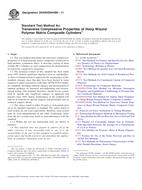 ASTM D5449/D5449M-11..
ASTM D5449/D5449M-11..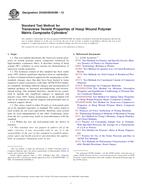 ASTM D5450/D5450M-12..
ASTM D5450/D5450M-12..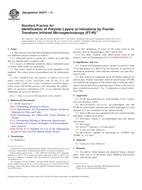 ASTM D5477-11
ASTM D5477-11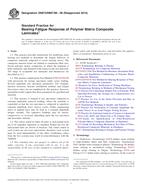 ASTM D6873/D6873M-08..
ASTM D6873/D6873M-08.. ASTM D7078/D7078M-12..
ASTM D7078/D7078M-12..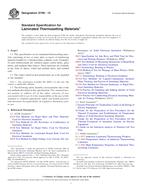 ASTM D709-13
ASTM D709-13
 Cookies
Cookies
